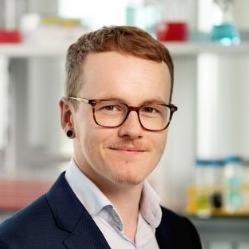Advanced 3D Cell Culture Technologies and Formats
A special issue of Bioengineering (ISSN 2306-5354). This special issue belongs to the section "Regenerative Engineering".
Deadline for manuscript submissions: closed (31 December 2023) | Viewed by 12765
Special Issue Editors
Interests: 3D cell culture; bioreactors; tissue engineering; biomaterials; stem cells; cell expansion and differentiation; dynamic cultivation; hypoxia
Special Issues, Collections and Topics in MDPI journals
Interests: biotechnology; bioengineering; bioprocess engineering; 3D cell culture; tissue engineering; bioreactors; stem cell manufacturing; stem cells; biomaterials; scaffolds
Interests: biomaterials; biopolymers; bioprinting; biomimetics; implants; hybrid materials; tissue engineering
Special Issues, Collections and Topics in MDPI journals
Interests: 3D tissue engineering; biofabrication; in vitro models of fibrosis; angiogenesis; cell-based therapy; extracellular matrix; transglutaminases; microenvironment; macromolecular crowding; adult stem cells; spheroid culture
Special Issues, Collections and Topics in MDPI journals
Interests: 3D culture; hydrogel development; bioreactor culture and differentiation; MSC culture and differentiation; MSC immunomodulation; cell based therapies
Special Issue Information
Dear Colleagues,
Approved cells and cellular products (i.e., extracellular vesicles) for cell-based therapy applications carry a huge promise for the treatment of a broad variety of diseases and several (stem) cell therapies. However, the therapeutic potential of cells is not fully exploited at present.
Traditional cell culture conditions do not represent the physiological conditions of the cellular native environment. For example, two-dimensional plastic surfaces are widely used as standard conditions. However, these conditions are proven to result in non-physiological behavior of the cells, cell damage, or genetic instability. By contrast, different 3D culture formats have been found to enhance the therapeutic potential of cells and cellular products for cell-based therapies. However, the generation of 3D cultures requires advanced culture technologies, such as novel culture plates geometries, materials and formats, and scaffold-based and scaffold-free approaches. Some approaches also require integration or combination with dynamic bioreactor systems.
Therefore, the aim of this Special Issue is to highlight these recent advances in 3D cell culture technologies to increase the therapeutic potential of cells and cellular products.
We invite you to contribute original research articles, reviews, and methods regarding novel 3D cell culture technologies that result in increased therapeutic potential of cells and cellular products (e.g., extracellular vesicles) for cell-based therapy applications. This might include but is not limited to:
- 3D culture approaches (aggregates/spheroids/organoids, influence of biomaterials, and biomaterial functionalization);
- Novel bioreactor systems or novel applications of existing systems for the generation and culture of 3D cell cultures or production of cells and cell-based products from 3D cultures.
Prof. Dr. Cornelia Kasper
Dr. Dominik Egger
Prof. Dr. Fedor Senatov
Prof. Dr. Michael Raghunath
Dr. Farhad Chariyev-Prinz
Guest Editors
Manuscript Submission Information
Manuscripts should be submitted online at www.mdpi.com by registering and logging in to this website. Once you are registered, click here to go to the submission form. Manuscripts can be submitted until the deadline. All submissions that pass pre-check are peer-reviewed. Accepted papers will be published continuously in the journal (as soon as accepted) and will be listed together on the special issue website. Research articles, review articles as well as short communications are invited. For planned papers, a title and short abstract (about 100 words) can be sent to the Editorial Office for announcement on this website.
Submitted manuscripts should not have been published previously, nor be under consideration for publication elsewhere (except conference proceedings papers). All manuscripts are thoroughly refereed through a single-blind peer-review process. A guide for authors and other relevant information for submission of manuscripts is available on the Instructions for Authors page. Bioengineering is an international peer-reviewed open access monthly journal published by MDPI.
Please visit the Instructions for Authors page before submitting a manuscript. The Article Processing Charge (APC) for publication in this open access journal is 2700 CHF (Swiss Francs). Submitted papers should be well formatted and use good English. Authors may use MDPI's English editing service prior to publication or during author revisions.










